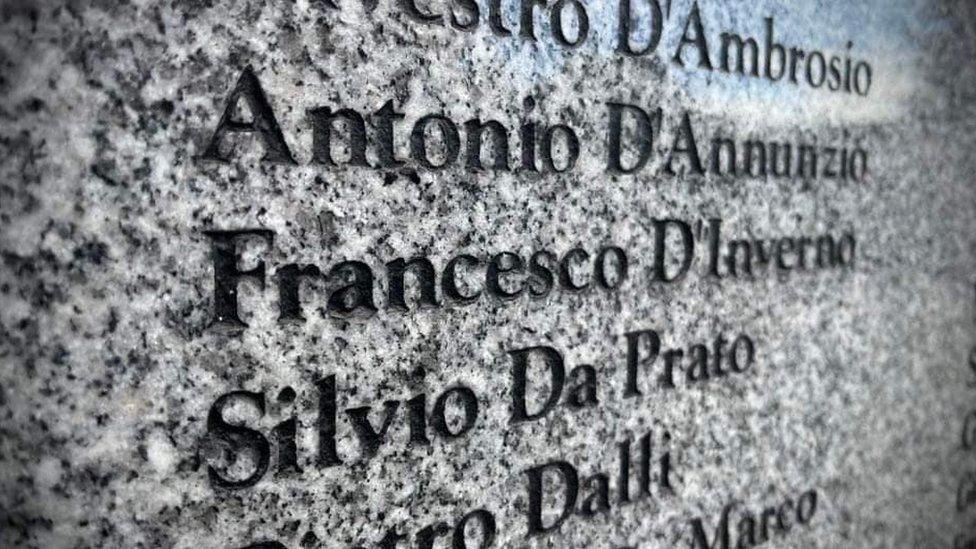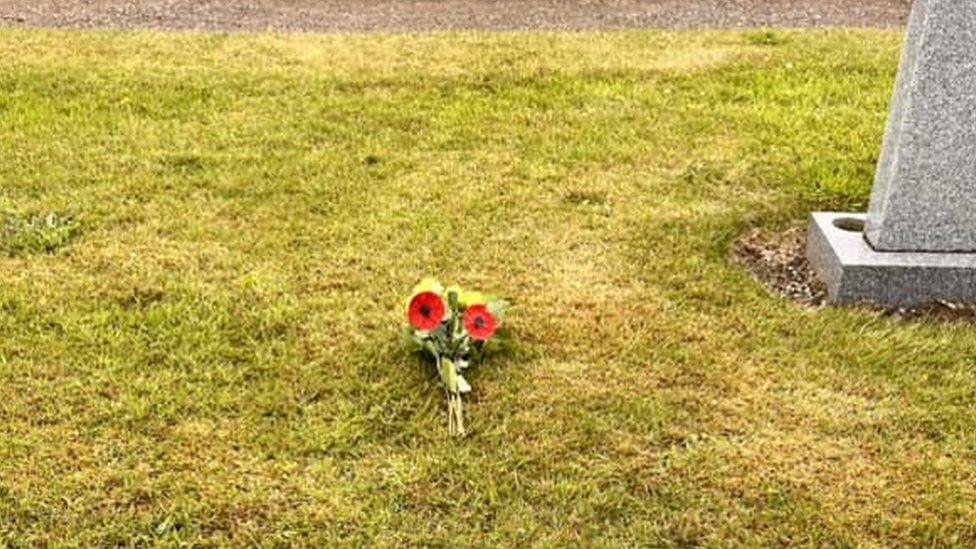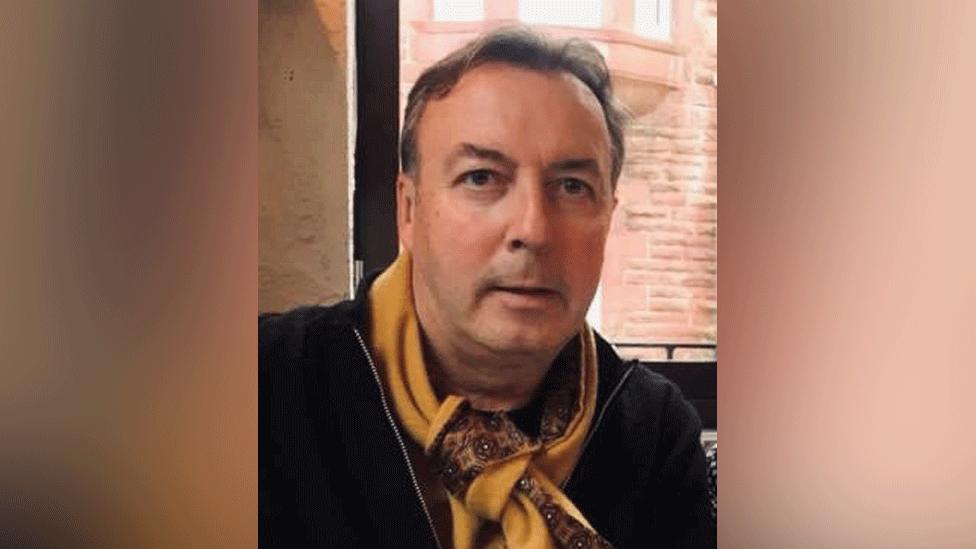Unravelling the story of an unmarked wartime grave
- Published

The body was found on the Ayrshire coast in 1940 and buried nearby in an unmarked grave
On 20 August 1940, the body of an unknown man was found by a nine-year-old boy on the South Ayrshire coast.
Two days later, the unidentified individual was buried in an unmarked grave in Girvan's Doune Cemetery.
More than 80 years later, detailed research has revealed his name - Francesco D'Inverno - and parts of his life story have been put together.
Now it is hoped he can be given a proper gravestone and members of his family traced.

Francesco D'Inverno was one of hundreds of people who died in the sinking of the Arandora Star
The story begins with the sinking of the Arandora Star which was torpedoed by a U-boat on 2 July 1940 off the Irish Coast.
The converted liner was being used to transport internees - mainly Italians - rounded up as "enemy aliens" across the UK after their country entered World War II.
More than 800 lives were lost with only a small number of the victims ever formally identified.
A few weeks later the body was found near Lendalfoot - thought to be the only one to have reached the Scottish mainland.

It was buried in a plain black coffin in the presence of the local parish priest.
It would be about 80 years later that efforts began, almost by accident, to identify who was in the grave.
Michael Donnelly of the Italian Garden Improvement Group (IGIG) - dedicated to the enhancement of a Glasgow memorial to Scottish Italians who lost their lives in the wartime tragedy - was working on a project in 2020 with the local council in Barga in Tuscany.
They were trying to put together pictures and biographies of the men from the area who died.

The unmarked grave is in Girvan's Doune Cemetery
That led to efforts to do something similar for all the Scottish Italians involved.
One of the names on Mr Donnelly's list was a Francesco D'Inverno but he got a surprise when he started his research.
"The thing that came up first was his death record, which is extraordinary," he said.
"Given that very few bodies were ever found, I was really puzzled that he was a man with a death record in the Scottish system.
"And on the death record, when I called it up, it actually revealed that he wasn't from here at all, he wasn't Scottish, his last known address was London."

Francesco D'Inverno's name appears on a memorial to Scottish Italians but he lived in London
It also showed that he had been found drowned at Lendalfoot.
Further research with South Ayrshire Council then discovered details of the burial in an unmarked grave at the Doune cemetery.
That was where Ritchie and Lorna Conaghan of the Girvan and District Great War Project (GDGWP) came in.
They were able to pinpoint the location of the burial site - on common ground - and establish that nobody else was buried in the same plot which would allow a gravestone to be put in place.

Ritchie and Lorna Conaghan helped to trace the burial site and show that only one body was in that plot
They describe themselves as a "tiny, tiny wheel" in the research but genealogist Raffaello Gonnella said the Conaghans were vital in putting together Francesco's story.
"We've actually had a whole history put together, the whole background put together," he said.
"Now we hope to find some of his family."
Born in Villa Latina in the Lazio region in 1901, Francesco D'Inverno was living in London - working in a hotel - during the 1930s.

Raffaello Gonnella hopes to trace relatives of Mr D'Inverno
In April 1939, he married Ginevra Tasselli but when Italy entered the war a year later he was arrested and deported on the Arandora Star.
Mr Gonnella knows the significance of the burial site discovery as his own grandfather also died in the tragedy but they never found the body or got a death certificate.
"To get somebody like Francesco found after 80 years, you just couldn't make up," he said.
"It's just something like a documentary, it's just phenomenal. That could have been my grandfather that was washed up.
"It's somebody's grandfather, it's somebody's brother - we're going to find out what relationships are out there."

It is hoped a proper gravestone can be put at the spot where Francesco D'Inverno is buried
He said that it was important to put a "proper memorial" at the site and Mr Donnelly agreed.
"It's a hidden story, it's a hidden tragedy," he said.
"It's a forgotten story, but now we've got Francesco."
Mr Conaghan said the important thing for them had been to find the story behind the man who has become "one of our boys from the Second World War" in the local cemetery.

Michael Donnelly said it was important to tell the story of the "hidden tragedy"
"It has got a great resonance because we are getting that very much unknown story of the Arandora Star out to the community locally here," he said.
"This, I would imagine, will be the very last chance that we would have to commemorate somebody that's buried from the Arandora Star - I think that is a massive, massive thing."
Early family contacts have been made in London, Italy and America but anyone who thinks they might have information has been asked to email Mr Gonnella., external
And fund raising is now ongoing to give Francesco D'Inverno the proper gravestone he never got more than eight decades ago.
- Published2 July 2020

- Published10 June 2010